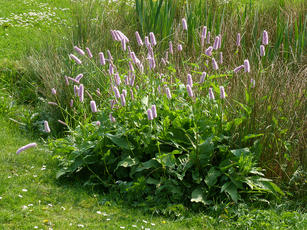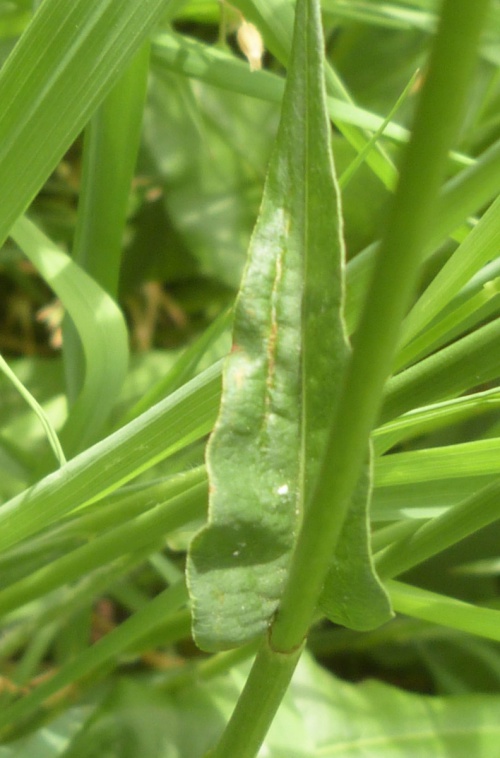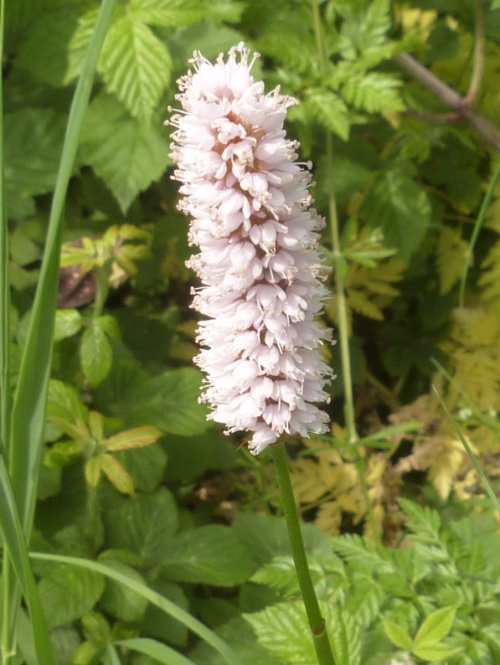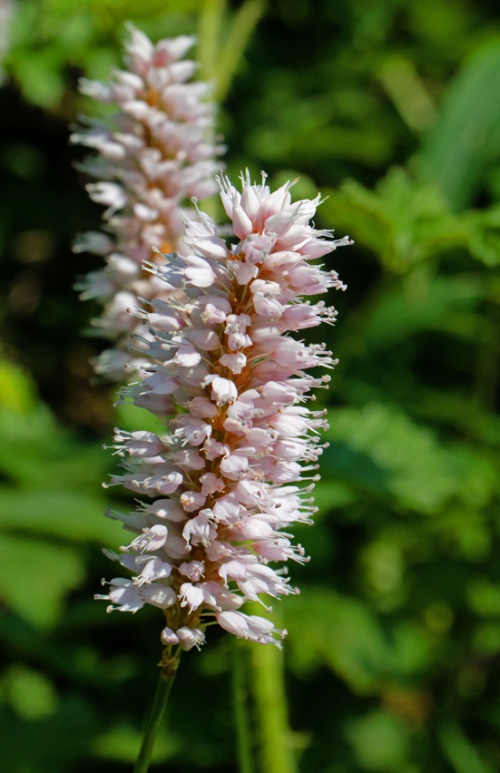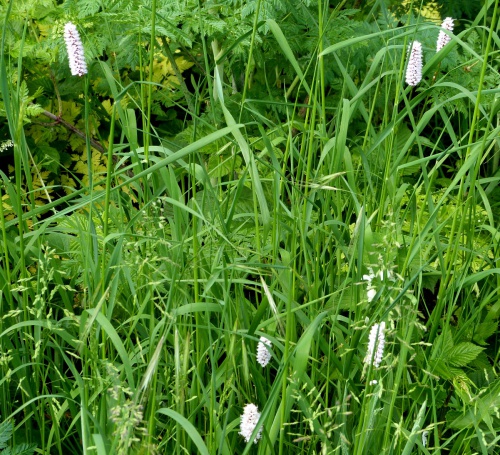Common Bistort - Bistorta officinalis
An erect, perennial with attractive pink flowers, in a tight cylindrical inflorescence. The basal leaves have a long petiole, while the stem leaves are sessile. The upper part of the petiole has a narrow wing of leaf tissue. The plant grows from a stout creeping rhizome, which spreads to create dense patches.
Persicaria amphibia growing on dry land
Unbranched flowerheads, one per stem; stamens exserted (sticking out from flowers). Leaves truncate/cordate at base, wider than P amphibia, lower ones with winged petioles
Photos of flowerhead, leaves and general growth form.
Often in damp areas and near to lakes margins, also in meadows and woods. A more vigorous variety (var. superba) is often grown in gardens and may survive near houses, after being thrown out
May to July.
Perennial
Found throughout Britain, but commonest in the north west of England.
Uncommon in Leicestershire and Rutland but true status is unclear due to garden escapes/throw-outs.
In the current Checklist (Jeeves, 2011) it is listed as Scarce. It may have been introduced in some locations.
Leicestershire & Rutland Map
Enter a town or village to see local records
MAP KEY:
Yellow squares = NBN records (all known data)
Coloured circles = NatureSpot records: 2020+ | 2015-2019 | pre-2015
UK Map
Species profile
- Common names
- Snakeweed, Common Bistort, Bistort
- Species group:
- Wildflowers
- Kingdom:
- Plantae
- Order:
- Caryophyllales
- Family:
- Polygonaceae
- Records on NatureSpot:
- 11
- First record:
- 30/04/2011 (Skevington, Mark)
- Last record:
- 07/06/2021 (Calow, Graham)
Total records by month
% of records within its species group
10km squares with records
The latest images and records displayed below include those awaiting verification checks so we cannot guarantee that every identification is correct. Once accepted, the record displays a green tick.
In the Latest Records section, click on the header to sort A-Z, and again to sort Z-A. Use the header boxes to filter the list.


